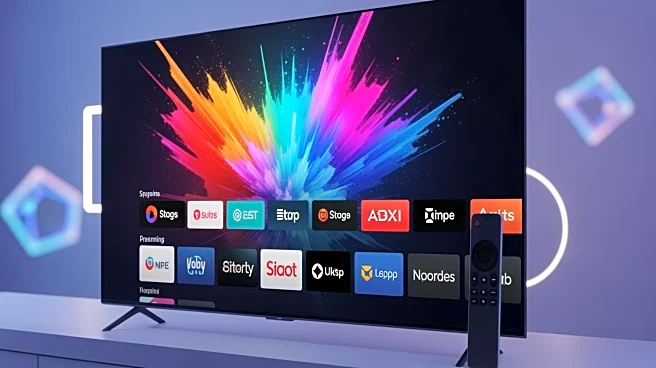What's Happening?
YouTube TV subscribers are currently experiencing a blackout of Disney-owned channels, including ESPN and ABC, due to a failure in negotiations over carriage fees between Disney and Google, the owner of YouTube TV.
The blackout began on October 31, leaving approximately 10 million subscribers without access to key channels. Disney has accused YouTube TV of refusing to pay fair rates, while YouTube TV claims Disney is using the blackout as a negotiating tactic to increase prices for its customers. This dispute has notably affected viewership for major events like Monday Night Football, with fans scrambling for alternative ways to watch their favorite sports and shows.
Why It's Important?
The blackout has significant implications for both consumers and the media industry. For consumers, especially sports fans, the loss of access to ESPN and ABC means missing out on major sporting events, which can affect viewership ratings and fan engagement. For the media industry, this dispute highlights the ongoing challenges in negotiating carriage fees between content providers and streaming services, which can lead to disruptions in service and impact revenue streams. The situation underscores the growing tension between traditional media companies and digital platforms as they navigate the evolving landscape of content distribution.
What's Next?
As negotiations continue, subscribers are left to explore alternative streaming options such as Fubo, DirecTV, and the ESPN App, which offer access to the missing channels. The resolution of this dispute will depend on whether Disney and Google can reach a mutually agreeable price for carriage fees. Until then, the blackout remains a point of contention, with potential impacts on subscriber loyalty and the competitive dynamics of the streaming market.
Beyond the Headlines
This dispute may have broader implications for the future of media consumption, as it highlights the power struggle between content creators and distributors. It raises questions about the sustainability of current pricing models and the potential need for regulatory intervention to ensure fair access to content for consumers. Additionally, it may influence how media companies approach negotiations with streaming services in the future, potentially leading to more strategic partnerships or alternative distribution methods.











